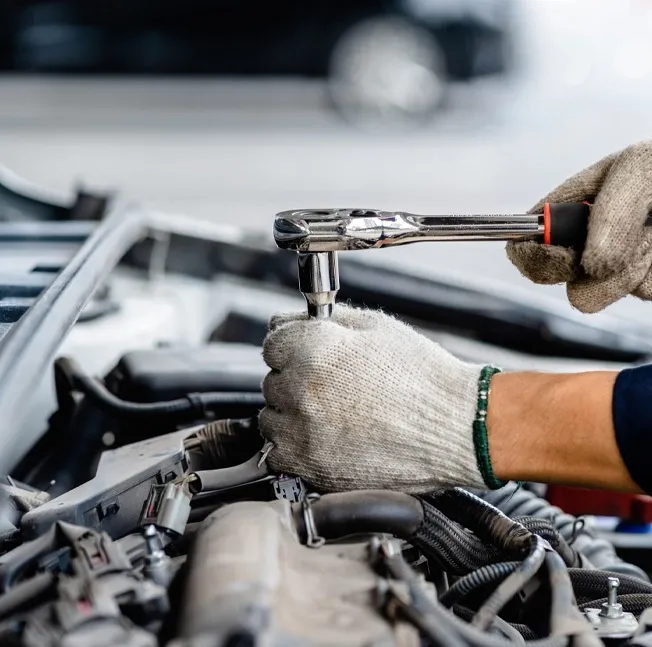Dec . 04, 2024 10:26 Back to list
Excavator Boom Cylinder Seal Change Guide for Optimal Performance and Maintenance
Excavator Boom Cylinder Seal Replacement A Step-by-Step Guide
Excavators are vital machines on any construction site, and their efficiency largely depends on the integrity of their hydraulic systems. One of the most critical components is the boom cylinder. It is responsible for lifting and lowering the boom. Over time, wear and tear can lead to seal failure in the boom cylinder, resulting in hydraulic fluid leaks, decreased performance, and costly repairs if not attended to promptly. In this article, we will guide you through the process of replacing the boom cylinder seals on an excavator.
Understanding the Components
Before diving into the replacement process, it's essential to understand the components involved. The boom cylinder consists of a piston, rod, and seals. The seals are crucial for maintaining pressure within the cylinder and preventing hydraulic fluid from leaking out. Common types of seals include O-rings, U-cups, and backup rings. Knowing the type of seals you need to replace is essential for a successful operation.
Tools and Materials Needed
To replace the boom cylinder seals effectively, gather the following tools and materials
1. Basic hand tools wrenches, pliers, screwdrivers, and hammers. 2. Specialized tools a cylinder hone, seal puller, and torque wrench. 3. Replacement seals make sure they are compatible with your specific excavator model. 4. Hydraulic fluid ensure you have the correct type for replenishment after the repair. 5. Safety gear gloves, goggles, and a hard hat.
Step-by-Step Replacement Process
1. Preparation Before starting any work, ensure that the excavator is on a level surface and that the arm is lowered to relieve pressure from the boom cylinder. Turn off the engine and remove the ignition key.
2. Drain Hydraulic Fluid Locate the fluid reservoir and drain the hydraulic fluid from the system. It’s advisable to use a container to collect the old fluid, as it needs to be disposed of properly.
excavator boom cylinder seal replacement

3. Remove the Boom Cylinder Disconnect the hydraulic lines from the boom cylinder. Be cautious, as there may still be some residual fluid. Next, remove the mounting bolts using the appropriate wrenches and slide the boom cylinder off the boom assembly.
4. Disassemble the Cylinder Once you have the boom cylinder removed, place it securely on a workbench. Carefully remove the end caps from the cylinder using a seal puller, taking care not to damage the cylinder itself.
5. Replace the Seals With the cylinder disassembled, you can now access the seals. Remove the old seals using a seal puller and clean the sealing surfaces thoroughly. Inspect the cylinder for any signs of wear or damage before installing the new seals. Make sure to lubricate the new seals with hydraulic fluid before installation to ensure they fit properly and do not tear.
6. Reassemble the Boom Cylinder Place the end caps back onto the cylinder, ensuring everything is aligned correctly. Use a torque wrench to secure the caps to the manufacturer’s recommended specifications.
7. Reinstall the Cylinder Lift the boom cylinder back onto the excavator and reconnect the hydraulic lines. Ensure all connections are tight, and there are no leaks.
8. Refill Hydraulic Fluid Refill the hydraulic system with the recommended type of hydraulic fluid, ensuring you reach the correct fluid level as indicated on the reservoir.
9. Test the System Start the excavator and test the boom’s functionality by raising and lowering it several times. Check for any signs of leaks around the cylinder.
Conclusion
Replacing the seals in an excavator boom cylinder can seem daunting, but with the right tools, materials, and guidance, it is a manageable task. Regular maintenance of your excavator’s hydraulic system not only enhances performance but also prolongs the lifespan of your machinery. Following this step-by-step guide will help you ensure your excavator operates smoothly and efficiently. Regular checks and timely repairs can save you from unexpected breakdowns and costly repairs in the future.
-
TCN Oil Seal Metal Ring Reinforcement for Heavy Machinery
NewsJul.25,2025
-
Rotary Lip Seal Spring-Loaded Design for High-Speed Applications
NewsJul.25,2025
-
Hydraulic Cylinder Seals Polyurethane Material for High-Impact Jobs
NewsJul.25,2025
-
High Pressure Oil Seal Polyurethane Coating Wear Resistance
NewsJul.25,2025
-
Dust Proof Seal Double Lip Design for Construction Equipment
NewsJul.25,2025
-
Hub Seal Polyurethane Wear Resistance in Agricultural Vehicles
NewsJul.25,2025
-
The Trans-formative Journey of Wheel Hub Oil Seals
NewsJun.06,2025
Products categories
















